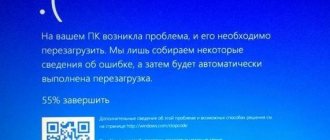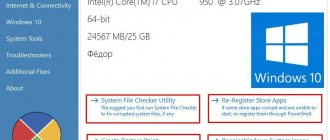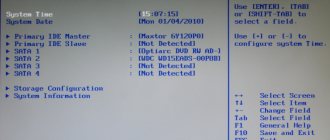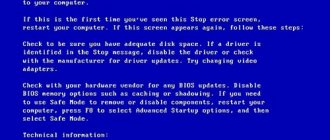Sometimes users working with the Windows 7 operating system encounter an unpleasant problem, which is that when starting an application (most often a user one), the so-called CLR20r3 error appears when starting the program. Not everyone knows what this is and how to eliminate such a failure, so we need to dwell on this problem in more detail. The solutions proposed below can be applied not only to the seventh modification of the system, since they work equally well in OS versions lower or higher.
Error CLR20r3 when starting a program: what is it, a failure or not?
Let's start with the fact that this failure is mainly typical exclusively for Windows version seven. In other modifications it is extremely rare. Why this happens is not known for certain, but the fact, as they say, remains a fact.
What’s most interesting is that in Windows 7, the CLR20r3 startup error is most often observed when trying to start executable files of games or applications related to multimedia (the same “Media Center” or the corresponding player). The failure itself is positioned as a disruption of the operation of some specific platform, which is activated when opening the corresponding programs.
Reasons for the error
Error CLR20r3 when starting a program is not critical in itself (the system continues to operate normally), but in user applications this manifests itself to a fairly high degree, and for some reason selectively (one program may run without problems, another may not start at all) .
As for the reasons for the occurrence of such a failure, the main ones include the following:
- Viral impact.
- Violations in the work of the Update Center.
- Outdated or damaged .NET framework.
Error CLR20r3 in Windows: causes and fix
There are a huge number of different errors in the Windows operating system, which can be divided into two categories: 1st are problems characterized by the presence of universal solutions and have standard signs/reasons for their occurrence, 2nd are problems characterized by the absence of universal solutions or to be more precise, the lack of results from their use. And it is precisely in the second category that the error with the event name “CLR20r3” belongs, which quite often manifests itself when running software on computers with the Windows operating system. What is the reason for its occurrence? Are there effective ways to solve it? The answers to these and other questions should be discussed in more detail below.
Troubleshooting CLR20r3 error on Windows.
Causes
Unfortunately, the essence (complexity) of the situation under consideration is that, despite the apparent obviousness, the root cause of the problem may be unforeseen, which quite often leads to a lack of results from the standard pool of recommendations.
Windows 7 CLR20r3 crash: how to fix
Now let's move directly to solutions that will allow you to get rid of this failure or its annoying message and restore the functionality of crashing applications. Let's look at how to fix the CLR20r3 error (Windows Media Center issues it, any other program or game, it doesn't matter), based on the above reasons for its appearance.
To begin with, it’s worth completely checking your computer for viruses, but for this you need to use not the installed standard scanner (it might have already missed the threat), but some portable utility that does not require installation on the PC (for example, Dr. Web CureIt!).
For deeper cleaning, if viruses have settled deep in RAM, the optimal solution is to boot from a disk or flash drive with the Kaspersky Recure Disk utility recorded on it. This program has its own bootloader, and therefore starts even before the operating system (the removable device itself is bootable, it just needs to be set first in the BIOS settings).
If no threats are detected, and the CLR20r3 error appears again when starting the program, it may very well be that the system simply does not have the necessary updates. There is a possibility that during the automatic update they were not fully downloaded or that during their installation the “Update Center” failed.
In this case, you need to check for available updates manually and install everything found, followed by rebooting the computer system.
If for some reason a manual search or installation is not carried out, and the system displays an update error, you will have to use the services section (services.msc in the “Run” console), find the “Update Center” line there, and double-click to call up the settings editing menu , stop the service, set the startup type to disable, save the changes, restart the system, re-enter the specified section and enable the service, setting the startup type to automatic. After this, if the automatic update does not start, you can check for updates again yourself.
Solutions
So, despite the aforementioned belonging of the error in question to the second category (according to the personal classification of the author of the article), you should try to apply standard recommendations, which in some cases still allow you to restore the functionality of the problematic software. The recommendations are standard not only for the “CLR20r3” error, but also for most other problems common in the Windows operating system, namely:
Restoring (checking) the integrity of system files
You should make it a habit to spend a few minutes from time to time checking the operating system for the integrity of components important for its functioning. To do this, just do the following:
- Press the key combination “WIN+S” and enter “cmd.exe” in the search bar.
- Right-click on the found option and select “Run as administrator.”
- In the command line console that opens, enter and execute (by pressing Enter) the command “sfc /scannow”.
- A Windows scan will begin, which can last several minutes or several tens of minutes, during which you should not interrupt the operation of the utility.
Upon completion of scanning and correcting existing “system gaps”, the utility will provide a report (logs) where it will directly indicate the missing components (if any). If the utility independently completed the tasks, you need to once again check the operation of the faulty software; if “gaps” were highlighted/found, but not corrected, then they should be corrected manually.
Checking Windows for virus activity
Viruses are one of the first reasons that can lead to violation of the integrity of components and damage to internal files of faulty software. To check, use any anti-virus software convenient for you, for example, the well-known “Doctor Web Cureit”, “Malwarebytes Anti-Malware” or “Kaspersky Virus Removal Tool” are ideal for many. Conduct a full scan of Windows, as well as removable media that accessed the computer and could (even if indirectly) become a source or subsequently a carrier of virus software.
Reinstalling the NET Framework
To download and manually install the “NET Framework” component, you should visit the official Microsoft website - https://www.microsoft.com/ru-RU/download/details.aspx?id=17851, also paying attention to the requirements set by the developers for the computer used .
But before installation, you should carry out some manipulations to remove the previously used version of the component: (excluding version 3.5, which is only available for disabling)
- Open Control Panel and go to Uninstall a program.
- Among the list presented there, find “Microsoft. NET Framework" indicating the installed version.
- Select it with a mouse click and click on the “Delete” button.
- Wait for the uninstallation to complete, restart your computer and install the component manually using the downloaded file.
It is also worth noting that there is a special utility called “Microsoft .NET Framework Repair Tool”, which is available for download - https://www.microsoft.com/en-us/download/details.aspx?id=30135. It is designed to check this component for errors and help fix them. If reinstallation did not help (or you already have the new version installed), then pay close attention to this feature.
System rollback and update installation
Determine the approximate date of occurrence of the error in question, based on the actions you perform (installing software, editing the registry, installing updates). For this:
- Open Control Panel and go to System Restore.
- Select a restore point.
- Wait until the operating system is restored (rolled back) to the configuration that was current on the date of the selected point.
After a system rollback (whether it was successful or not), check Windows to ensure it is ready to install important updates. In addition, it would be a good idea to check the software drivers used to ensure they are up to date.
Guaranteed method to fix the problem
Finally, let's move on to the most basic reason for the failure. Many games and multimedia applications require the .NET Framework to work correctly. Its absence, obsolescence or damage in most cases provokes the occurrence of such a failure.
You can correct the situation quite simply by downloading the latest version of the platform from the official Microsoft resource and integrating it into the system. Just in case (although this is not necessary), you can update the DirectX version at the same time. But you don’t need to touch the MS Visual C++ Distributable component, since many applications install it themselves and different programs require different versions of the package (several of them may be present in the system at the same time, regardless of the year of development and release).
Fixing CLR20r3 error
There are several reasons that cause this error, but the main one is incorrect operation of the .NET Framework component, version mismatch or its complete absence. There may also be a virus attack or damage to system files responsible for the functioning of the corresponding system elements. The instructions below should be followed in the order in which they are presented.
Method 1: System Restore
This method will be effective if problems began after installing programs, drivers or Windows updates. The main thing here is to correctly determine what caused this system behavior, and then select the desired restore point.
Method 2: Troubleshooting problems with updates
If a failure occurs after a system update, you should think about whether the process ended with errors. In such a situation, you must eliminate the factors that affect the success of the operation, and in case of failure, install the necessary packages manually.
Method 3: Troubleshooting .NET Framework Issues
As we wrote above, this is the main reason for the discussed failure. This component is vital for some programs in order to enable all functions or simply be able to run under Windows. The factors influencing the operation of the .NET Framework are very diverse. These are the actions of viruses or the user himself, incorrect updating, as well as non-compliance of the installed version with software requirements. You can solve the problem by checking the version of the component, and then reinstalling or updating it.
Method 4: Check for viruses
If the above methods did not help get rid of the error, you need to check your PC for viruses that may block the execution of program code. This should also be done if the problem was resolved, since pests could be the root cause of its occurrence - damaging files or changing system parameters.
Method 5: Restore system files
This is the last resort for fixing the CLR20r3 error; the next step is to reinstall the system. Windows has a built-in SFC.EXE utility that provides protection and recovery functions for damaged or lost system files. It should be launched from the “Command Line” under a running system or in a recovery environment.
There is one important nuance here: if you are using an unofficial (pirated) build of Windows, then this procedure can completely prevent it from working.
Conclusion
Fixing the CLR20r3 error can be very difficult, especially if viruses have settled on your computer. However, in your situation everything may not be so bad and updating the .NET Framework will help, which is what most often happens. If none of the methods help, unfortunately, you will have to reinstall Windows.











